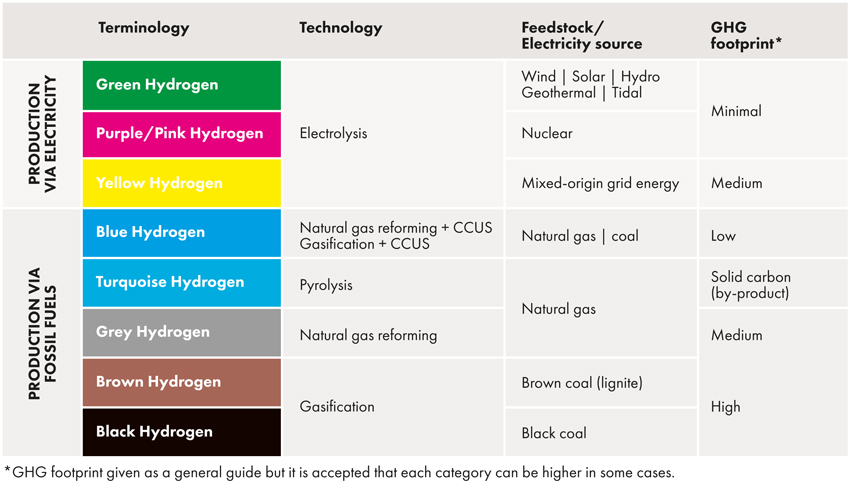Hydrogen – data telling a story
The Global Energy Infrastructure (GEI) team held a webcast earlier in March which looked at trends in traditional and new energy markets which reveals major trends in global energy markets. Oil infrastructure staging a comeback from historic lows, while natural gas, hydrogen and renewables point the way to a very different energy future.
In this article we review GEI data on the hydrogen industry. GEI has been researching hydrogen projects for several months now after need to locate and track the development of the industry. A glance at our data, which contains over 1,500 projects globally, reveals that we have many fields of information including geographical, ownership and status but also methods of how to classify hydrogen. Our data includes technology processes and a system based upon carbon intensity. Hydrogen is a colourless gas – however, depending on the production type, different colours are assigned to the hydrogen production.

To date, hydrogen is largely produced from fossil fuels (Grey or Blue). In the long term, however, ways are being sought to produce hydrogen from renewable sources to reduce carbon dioxide (CO2) emissions (Green) and this is backed up by looking into our systems. Nearly all traditional hydrogen production could be classed as Grey hydrogen as it is made from existing refineries or gas processing plants. Grey accounts for around 49% of projects listed but more interestingly 89% of these are operating.
It is likely that Grey will dominate for the short term as the oil and gas sector already has the infrastructure in place. Our data shows that these projects are located near to the existing hydrocarbon processing areas such as the US Gulf coast, India, and Middle East.
The next step towards the energy transition is what is known as Blue hydrogen. Blue hydrogen uses the same thermal processes such as Steam Methane Reforming (SMR) and Autothermal Reforming (ATR) to split natural gas or coal into Hydrogen and CO2, but here the C02 is captured and stored. This process is known as Carbon Capture Utilisation Storage (CCUS) and is an important technology of emission reduction. This technology could be used more widely in the existing refining and gas processing sectors.
Here 14% of our projects are Blue with just over 50% of these are operating. In terms of geography the Blue facilities are concentrated in similar areas to the Grey projects.
The final step towards the lowest carbon landscape in the energy transition is Green hydrogen. Green uses electricity generated by renewable sources such as wind or solar. Although not totally carbon free in the construction of renewable electricity sites the electrolysis processes produce no emissions and by many as the hydrogen of the future. The speed of development will depend on the availability of surplus renewable electricity, incidentally something else GEI tracking.
The database shows nearly 25% of all projects are Green, however only a fraction of these projects is operating (18%) and those that do exist are on a small scale. Geographically Green is focussed on Europe and Australia. This may be a result of bigger appetite for renewables and emission targets set by governments.

So, the plans and proposals are in place for cleaner Green hydrogen, but it may be several years before it becomes widespread. Large scale production of hydrogen will require more that production facilities. Its pace will depend on transportation and distribution networks and ultimately demand.
To hear more about what story the GEI project data tells. Listen on-demand to our latest webcast https://globalenergyinfrastructure.com/resources/webcasts




Comments